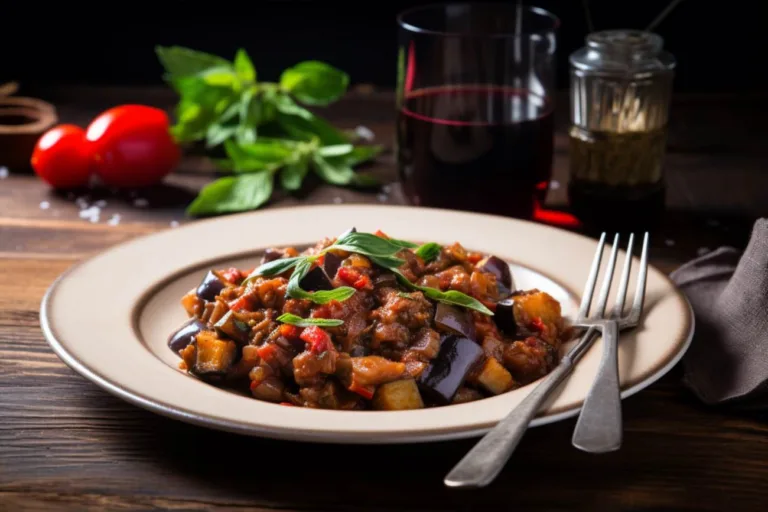Welcome to our culinary exploration of caponata, a sensational Sicilian dish that tantalizes the taste buds with its unique blend of flavors and textures. Caponata is a quintessential example of Sicilian cuisine, renowned for its harmonious combination of sweet, sour, and savory elements. In this article, we delve into the origins, ingredients, preparation, and variations of this iconic dish.
The essence of caponata
Caponata is a rich and flavorful eggplant-based dish that exemplifies the culinary traditions of Sicily, an Italian island known for its diverse influences and robust flavors. This dish encapsulates the spirit of Mediterranean cuisine, embracing the abundance of fresh vegetables and aromatic herbs.
Ingredients that dance in harmony
The symphony of flavors in caponata arises from the careful selection of ingredients:
- Eggplant: The heart of caponata, eggplant brings a velvety texture and mild flavor.
- Tomatoes: Ripe tomatoes add a burst of juiciness and natural sweetness.
- Onions: Sautéed onions provide a savory foundation.
- Celery: Celery offers a satisfying crunch and earthy undertones.
- Olives and Capers: These briny ingredients introduce the dish’s signature tanginess.
- Vinegar: A touch of vinegar contributes the essential sour note.
- Pine Nuts and Raisins: These contrasting elements bring depth and sweetness.
- Herbs: Basil, oregano, and mint infuse the dish with aromatic freshness.
Preparing the symphony
The process of crafting caponata is a labor of love that yields a delightful medley of flavors. Here’s a brief overview of the preparation:
-
Cut the eggplant into cubes, salt them to draw out excess moisture, and then fry them until golden brown.
-
Sauté onions and celery until they become tender and aromatic.
-
Add tomatoes, olives, capers, pine nuts, and raisins to the pan, creating a lively mixture.
-
Pour in vinegar, sugar, and a dash of water to balance the flavors.
-
Simmer the mixture until it melds into a harmonious blend.
-
Sprinkle fresh herbs over the caponata before serving, allowing their fragrance to envelop the dish.
Variations for every palate
Caponata’s versatility encourages culinary experimentation. Here are some delightful variations:
Sicilian Caponata with a Twist
Add a touch of cocoa powder and a pinch of cinnamon for an intriguing depth of flavor that pays homage to Sicily’s historic influences.
Seafood Caponata
Incorporate seafood such as shrimp or squid to create a delightful marriage of land and sea.
Caponata Crostini
Serve caponata on toasted bread slices for an elegant appetizer that’s perfect for entertaining.
Frequently asked questions
1. What is the origin of caponata?
Caponata hails from Sicily, Italy, where it has been savored for centuries as a quintessential dish of the region.
2. Is caponata a main course or a side dish?
Caponata is incredibly versatile. It can be enjoyed as a main course, especially for vegetarians, or served as a side dish alongside grilled meats or fish.
3. Can I make caponata in advance?
Absolutely! In fact, caponata often tastes even better the next day as the flavors continue to meld. Store it in the refrigerator and gently reheat before serving.
4. What wine pairs well with caponata?
The vibrant flavors of caponata pair wonderfully with medium-bodied red wines like Nero d’Avola or a fruity white wine like Grillo.
5. Is caponata suitable for vegans?
Yes, caponata can easily be made vegan by omitting the pine nuts or using a plant-based alternative, and ensuring all ingredients are vegan-friendly.
In conclusion
Caponata is more than just a dish; it’s a journey through the vibrant flavors of Sicilian cuisine. Its medley of ingredients, preparation methods, and versatility make it a delightful addition to any culinary repertoire. Whether you’re a seasoned chef or a culinary enthusiast, caponata invites you to savor the essence of Sicily with every delectable bite.
Pozri tiež:






